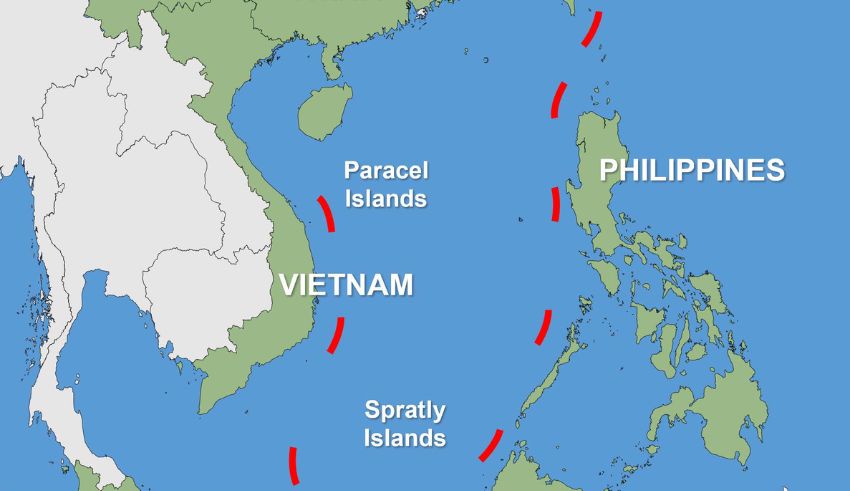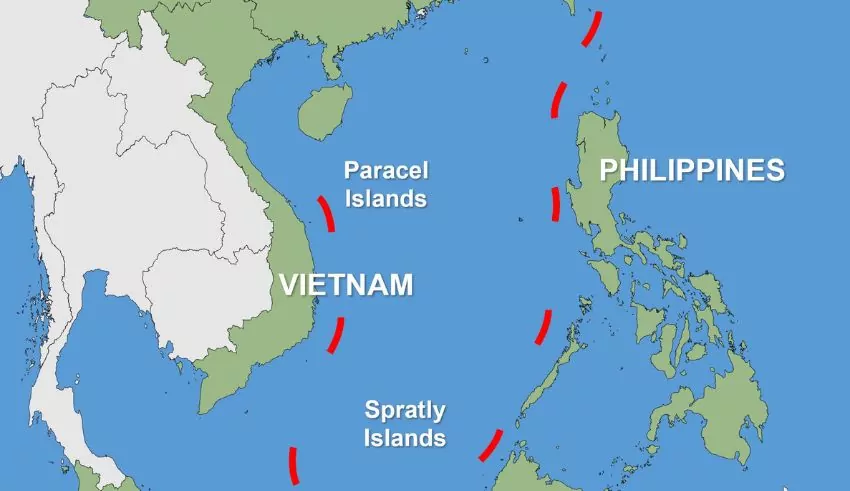

(C) Startup Pakistan
In the tumultuous theater of global geopolitics, the South China Sea once again takes center stage, but this time, the script is far from ordinary. With Beijing’s audacious ten-dash line stealing the limelight and the Philippines conducting a multi-billion-dollar military makeover, a storm of intrigue swirls around the resupply mission to the enigmatic BRP Sierra Madre. This grounded warship, left deliberately stranded in 1999 at the disputed Second Thomas Shoal, now serves as a symbolic Filipino outpost amidst this tempestuous sea.
Reports from the depths of Chinese media tell a tale of Manila’s supply and coast guard ships repeatedly caught “trespassing” in the region. Astonishingly, this marks the third such incident in just five weeks. These provocative encounters come on the heels of a recent episode where China’s coast guard deployed water cannons against a Philippine military supply boat. Beijing’s Ministry of Foreign Affairs justifies these actions as “safeguarding sovereignty in accordance with law” and chastises Manila for its seemingly perpetual promises to remove the beached Sierra Madre, spanning an astonishing 24 years.
The stage is set for political theater in the Philippines. Chinese commentators have harshly criticized former President Rodrigo Duterte for his condemnation of the ten-dash line and his bold proclamation that Manila “wouldn’t resist a fight” for its maritime rights. In China’s eyes, this rhetoric veils internal dissent against the current Marcos regime’s pro-U.S. policy and raises questions about whether Manila truly understands the desires of its people. Manila further tests Beijing’s patience by ranking the danger of conflict in the Taiwan Strait as a “major security concern” in its newly published National Security Policy.
As China accuses the United States of being the main aggressor in the South China Sea, the plot becomes more complicated. Chinese state television CCTV portrays recent maritime events as merely justifications for the normalization of American military presence in the area. A scathing cartoon in China Daily portrays Washington as puppeteering the Philippines, reducing it to a mere “hatchet man” employed to attack China from a safe distance. Meanwhile, pundits argue that Washington, Tokyo, and Canberra view the Philippines as more than just an ally—they see it as “cannon fodder” in their grander scheme to contain China. In the midst of this geopolitical drama, the 2016 arbitration that rebuffed Chinese sovereignty claims in the South China Sea is unapologetically dismissed as “waste paper” in the realm of international maritime law.
In the midst of this geopolitical maze, the appointment of Teodoro Locsin as Manila’s Special Envoy to China adds a layer of enigma. Some interpret this as Manila’s overture to stabilize relations with Beijing, as Locsin has not only favored cooperation with China but also criticized Western powers. However, others view this choice with disappointment, suggesting a deeper complexity to the Philippines’ diplomatic strategy.
Manila’s revamped security policy aligns with a broader trend of enhanced engagement with the United States, which deems Manila a pivotal actor under its 2022 Indo-Pacific Strategy. Chinese commentators offer contrasting interpretations of this geopolitical drama. One speculates on the possibility of the U.S. invoking its 1951 Mutual Defense Treaty with the Philippines, questioning whether Washington, preoccupied with economic troubles, would fully commit to Manila’s aid. The commentator suggests that despite harboring animosity toward China and Russia, Washington might hesitate to escalate the situation into a full-blown military conflict due to the specter of nuclear war. Another perspective likens the current situation between Beijing and Manila to that of Russia and Ukraine, urging China to tread carefully to prevent a “serious military crisis.”
While the prospect of an all-out military clash remains remote, the specter of peace continues to elude the South China Sea. ASEAN stands fragmented, and individual nations lack the clout to negotiate effectively with China. It is incumbent upon Beijing to realize that its escalating assertiveness is driving a wedge between itself and regional neighbors. As for Manila, the key to resolution may lie in fortifying regional organizations like ASEAN and cultivating multilateral cooperation with fellow claimant nations, creating the essential conditions for meaningful dialogue.
In this riveting geopolitical drama, the world watches with bated breath, as unique and intricate as the South China Sea itself. The hope for lasting tranquility persists amidst the swells of uncertainty, waiting for a curtain call that will rewrite the script of South China Sea geopolitics.
OpenAI updated ChatGPT-4o to include its best text-to-image tools so free users can generate Studio Ghibli artwork by giving basic…
The stepping down of Piyush Gupta from the post of CEO of DBS Bank came after 15 years of leading…
The Delhi Directorate of Education releases 2025-26 marks for year-end tests in school levels 6 through 11. Online test data…
Singapore will further cement its status as an important basketball destination when it hosts three FIBA 3x3 events in 2026…
Jewel Section E, directed by Theodore Boborol and starring Ashtine Olviga as Jay-Jay Mariano, Andres Muhlach as Mark Keifer Watson,…
Cebu Pacific celebrates the delivery of its very first aircraft for 2025, the 459-seat Airbus A330neo, delivered at Ninoy Aquino…
This website uses cookies.
Read More